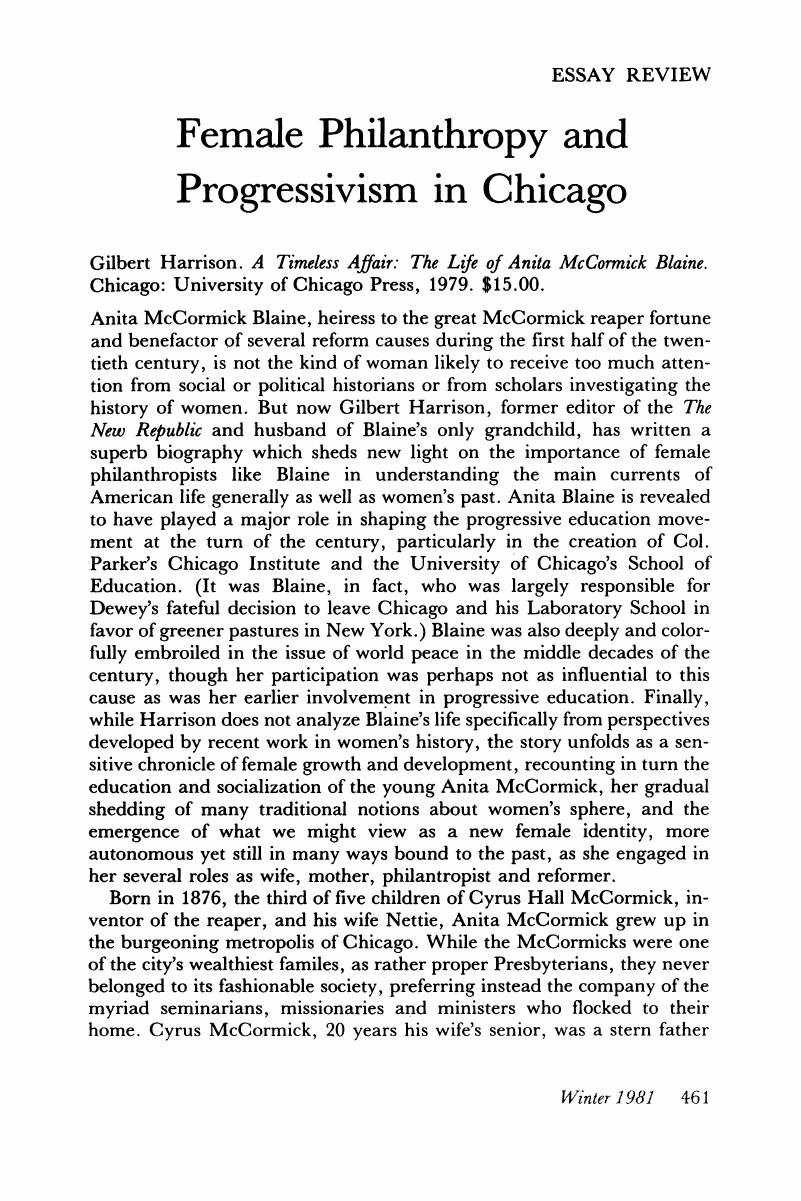Published online by Cambridge University Press: 24 February 2017

1. See Ellen Condliffe Lagemann's interesting discussion of Grace Dodge and of social feminism during the progressive period in A Generation of Women: Education in the Lives of Progressive Reformers (Cambridge, Mass., 1979). Also see the biographical sketch of Grace Dodge by Cross, Robert D. in Notable American Women, Vol. 1 (Cambridge, Mass., 1971), pp. 489–492, and Irvin Wyllie's portrait of Margaret Sage, ibid, Vol. III, pp. 222–223.Google Scholar
2. See the biographical sketch of Henrotin by Boyer, Paul S., Notable American Women, Vol. II, pp. 181–183, and of Palmer, by Ross, Ishbel, Vo. III, pp. 8–10. Bowen is profiled in Notable American Women: The Modern Period (Cambridge, Mass., 1980), pp. 99–101.Google Scholar
3. See White's portrait of Blaine in Notable American Women: The Modern Period, pp. 80–82. Burgess's, Charles O. biography of McCormick, Nettie, Notable American Women, Vol. II, pp. 454–455 is also very useful.Google Scholar
4. See Ann Firor Scott's provocative treatment of the subject of women as outsiders in “What Happens When Outsiders Become Insiders?”, Second Century Radcliffe News, (June 1981):7–8.Google Scholar